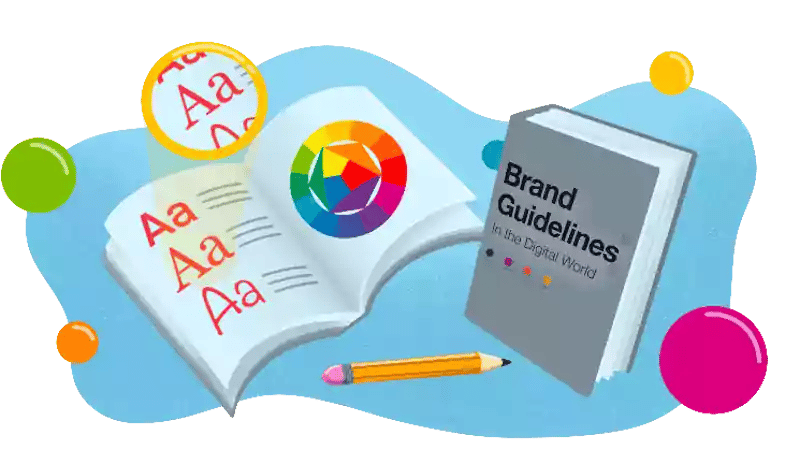A Startup's Guide to Brand Management
We all have that one friend with that one personality quirk that we're just not sure what to do with. We love everything about them, except for one seemingly insignificant yet impossible-to-ignore quirk. Does your startup have a quirk like that? If so, or more importantly, if you're unsure, it's time for brand management.
Brand management is about monitoring and maintaining your startup's personality. Like that friend, if your startup brand has a quirk left unchecked, it can wreak havoc on your reputation. As a startup, you invest time, energy, and resources into developing your brand. The last thing you want to see is your reputation goes down the tubes because you weren't on top of things, and a controllable situation got out of control.
What is a Startup Brand Composed of?
Just like a human personality, a brand is composed of multiple traits. There are tangible brand assets, and then there are intangible ones. Tangible assets include:
Brand Name: Is your brand staid and reliable? Or are you the rebel of your sector? You are the only ABC Widget Corp; your startup's good name is the first thing people will see and remember you by.
Design Elements: Logo, color scheme, typography, font, and more represent your brand's personality and how you appear to your audience. These are the second thing people will see and associate with your brand.
Content Style Guide: The attitude and tone with which your content represents the company. All content, whether a blog post, landing page copy, or individual tweet, should conform to this style guide and be written in a consistent brand voice. Don't have a style guide? Start by creating a social media branding checklist. You can use our free template below.
Then we come to the intangibles, these are the traits that it's harder to nail down. That friend with the certain something everyone loves, yet nobody can put a name to.
Awareness: A general sense of how people view your brand. It covers everything from those who have never heard of you to those who are regular followers of your social media presence and repeat customers.
- Reputation: What all those people think of you. Is your startup rocking it on Instagram? How about your blog? What are people saying about you on Yelp? All of this combines to create a general sense of your brand reputation.
- Gravity: Brand gravity is the term used to describe brand reputation + awareness + the pull your brand has on people. Do they know to go straight to your website for great content? Or are they still finding you by chance when searching for answers to their pain points? When you develop brand gravity, that pull brings them straight to you.
Loyalty: Do you have a devoted following of repeat customers? Then you have brand loyalty. It's when people look to you first for a solution.
All of these traits and aspects of your brand need attention paid to them regularly to ensure that things are going well. If you forget to monitor your social media mentions for a while, then come back to find a viral thread slamming your customer service that went unchecked for a week with no comment or mitigation from your team—nothing good can come of that.
Monitor Outside Influences
We touched on monitoring your brand reputation online, but what does that mean? It means that while you can't control what people say about you, you can respond and mitigate any negative press you're getting.
This includes “social listening," which means using your social network profile to watch for people talking about your company. Find a positive conversation and get in there, thanking folks for using your widget, offering exclusives for followers, and generally being awesome. You can take those casual fans and convert them into diehard brand advocates.
And should you find a negative conversation about you, by stepping in and answering questions, addressing complaints, and again just generally being awesome, you can take these nay-sayers and convert them back into fans.
As the next step in managing your online presence, consider creating a support-specific account on the busiest social platforms. If you're seeing a growing amount of traffic on Twitter, make an account for ABCWidgetSupport and direct inquiries there. Now, you have a place dedicated to addressing brand management concerns in-channel. And as a bonus, when you have a positive interaction with a follower, you can re-post it to the leading company presence to show the world how awesome your startup is at customer service.
Internal Resources: Don't Ignore Them
While you're spending time and effort on monitoring your external influences, don't let your internal resources slide by unnoticed. This refers to everything within the company, from physical assets to team member morale. Creating a culture that allows people to thrive and truly enjoy their work is the key to a team member base that will act as brand advocates.
Watch for any signs of unrest among your workforce and get ahead. A happy team member is more than willing to act as a brand ambassador when they're out of the office. And so is an unhappy one. Which would you instead have talked about yourself to friends and family?
Brand Management: It's Not Just About Marketing Anymore
In today's marketplace, startups that understand the power of word-of-mouth and the pull of social networks are better positioned to stand out in a crowd. Where once a solid marketing strategy was all you would have needed to differentiate your widget from the others, today, you need to seamlessly combine that with customer service, sales, and even HR to thrive truly.
Maintaining your brand reputation is akin to knowing yourself and your personality traits and understanding how they impact your interactions with friends and strangers. It's how you present your startup to the world and make first impressions that will not only last but work to convert strangers into customers and customers into brand evangelists.
This content is also available in:
- German: Leitfaden für das Markenmanagement eines Startups
- Spanish: Guía de gestión de marca para empresas emergentes
- French: Guide de la gestion de la marque pour les entreprises startup
- Italian: Guida alla gestione del marchio per le startup
- Romanian: Ghidul unui start-up pentru gestionarea mărcii
- Chinese: 初创企业品牌管理指南











Leave a Comment